To maximise our experience of the Galápagos Islands we chose to do a mixture of sea based and land based activities. For the first four days we were on the MV Legend run by Go Galapagos with around 100 other passengers. This was our first experience of a cruise of any form and we were apprehensive that we would be surrounded by stereotypical cruise passengers, and feel completely alien. As it turned out the majority of our fellow passengers were not like that and were a complete cross section of ages. The Galapagos National Park Authorities are strict in controlling access to the Park and the only ships allowed are those registered in the Islands.

Our first day’s activity on boarding the ship after a long travelling day from Quito was a boat ride around the coast of Seymour Norte, where we saw our first frigate bird complete with its puffed out red breast, before making a wet landing onto the beach on Mosquera Island. The beach was full of sea lions lounging on the sand as well as marine iguanas and the colourful sally-lightfoot crabs. There were so many sea lions it was often a challenge not to trip over them. The sea lions are one of the Galápagos Islands most iconic animals and in many ways they are the marine equivalent of the many feral dogs that gag around most South American towns.

Day two took us to Puerto Egas on Santiago Island and its smaller neighbour Rabida Island. On Santiago Island our shore visit brought us into contact with yet more sea lions and marine iguanas. There we also saw the lava heron, which are the marine iguanas principal predator and also a juvenile hawk completely oblivious to all the tourists taking his picture. The hawk sits at the top of the food chain in the Galápagos Islands.

Rabida Island has a burgundy red coloured beach, again full of sea lions. The trek above the beach has some wonderful views across to Santiago Island and offers a great vantage point to observe the pelicans fishing. The snorkelling off the beach and also direct off the dinghies in the cold waters, which are full of plankton offers some of the best sightings of marine turtles and tropical fish in the world. Indeed there are so many sea turtles that you quickly loose count of them. The seas around the Galápagos Islands are one of the most fertile in the world in that the mixing of the cold Cromwell and Humboldt Currents with the warmer Panama Current has the effect of sweeping up all the nutrients from the bottom of the Ocean up to the surface for the fish, sea birds and passing migrating mammals to feed on.
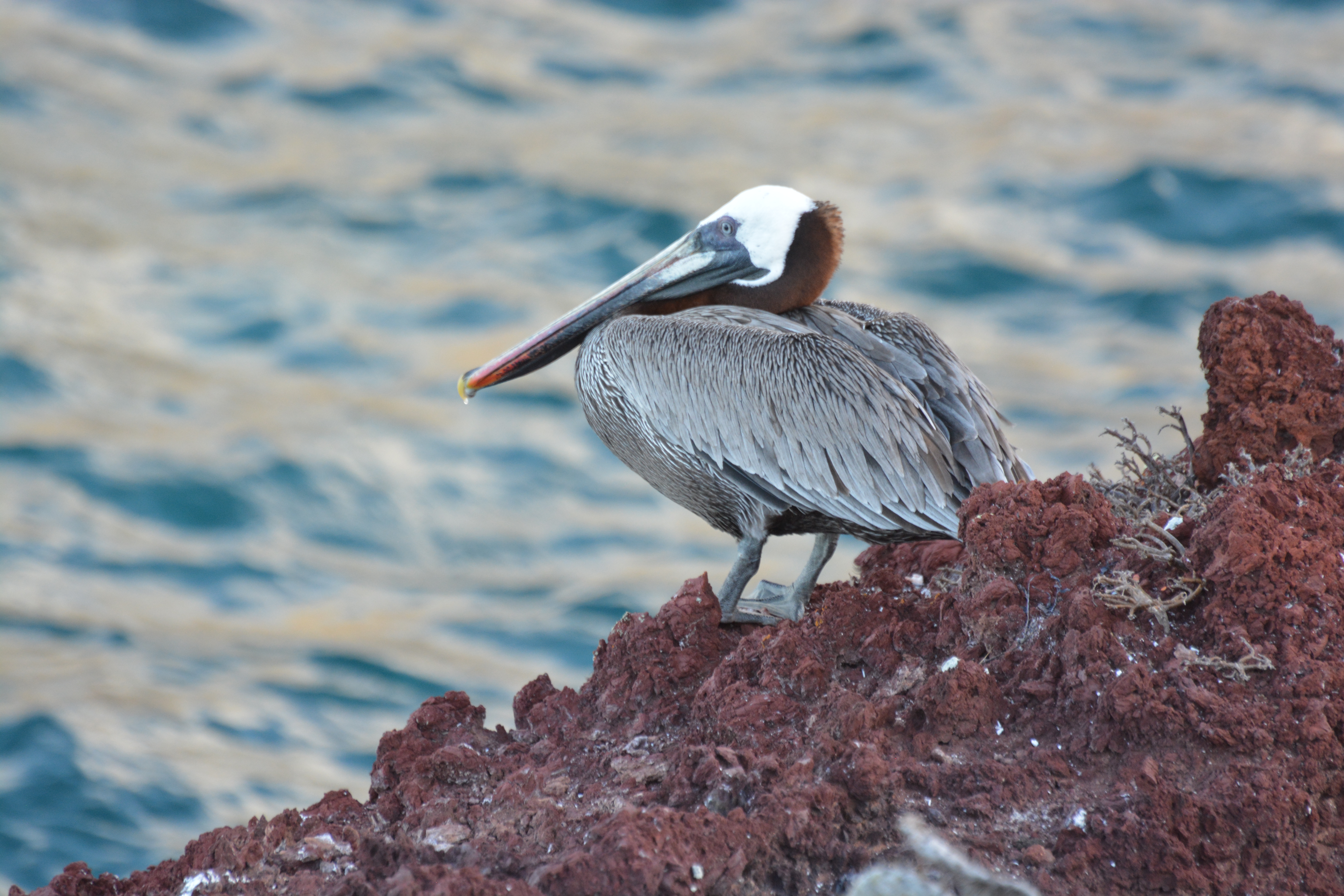
Day three took us to the Western side of Isabela Island, the largest in the Galápagos Islands and one of the newest islands. Here the waters are much colder in that the cold Cromwell Current first hits the Galápagos Islands here and nearby Fernandina Island. On the Southern side of Isabela Island is the Sierra Negra Volcano, which was erupting on our visit and in the early morning the fires and high temperatures of the lava flows on the its northern slopes made for a dramatic spectacle in the otherwise dark skies.
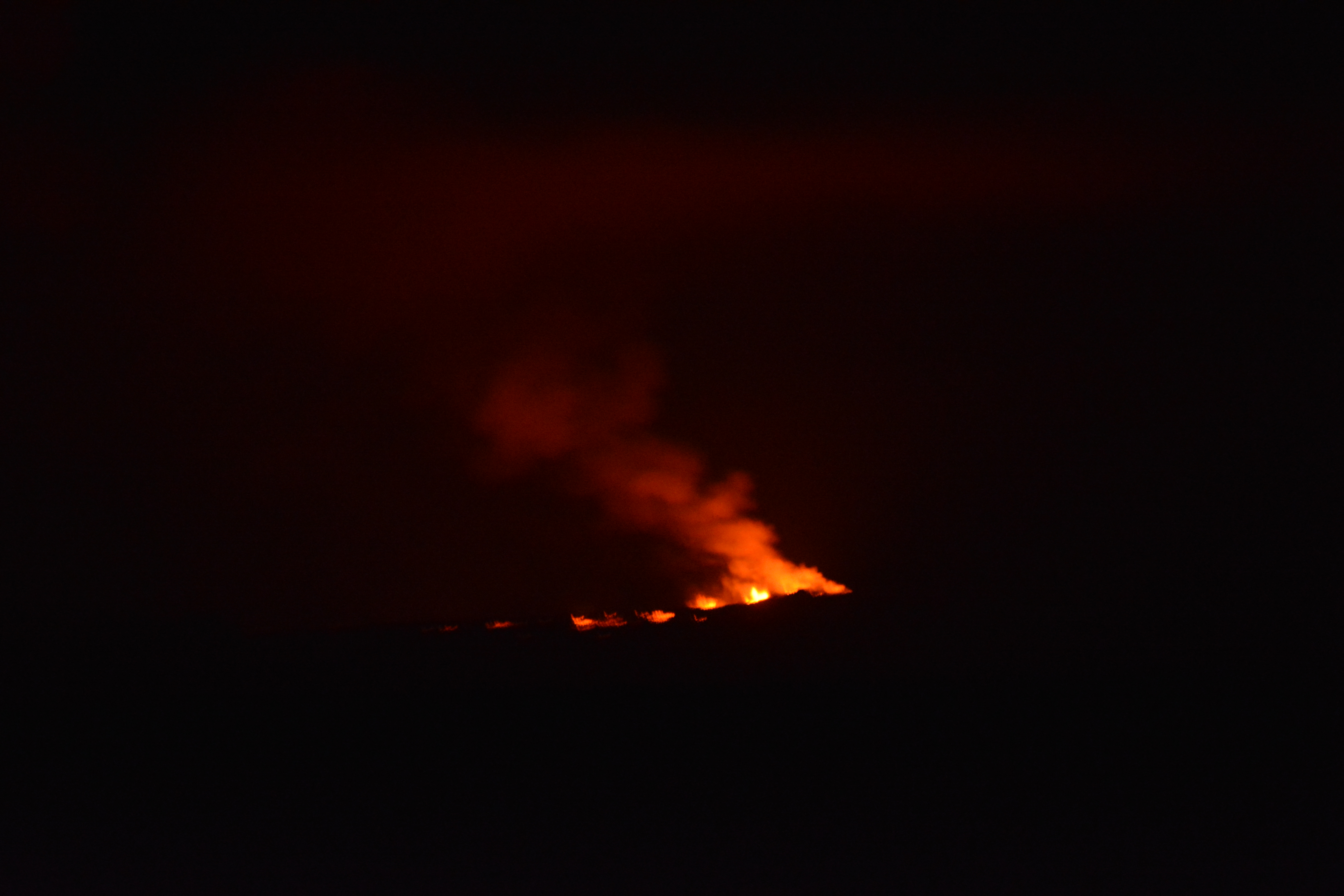
We went on land at both Urbina Bay and Tagus Cove. At Urbina Bay there is a colony of giant tortoises, which are very placid and surprisingly peaceful reptiles. In addition we also saw our first land iguanas, which are much larger than their marine cousins. In both cases that reptiles are not at all bothered by the tourists walking around them, instead the iguanas are simply content to lap up the heat from the sun, while the tortoises carry on munching vegetation, only to retreat back into their shells when they feel particularly threatened.
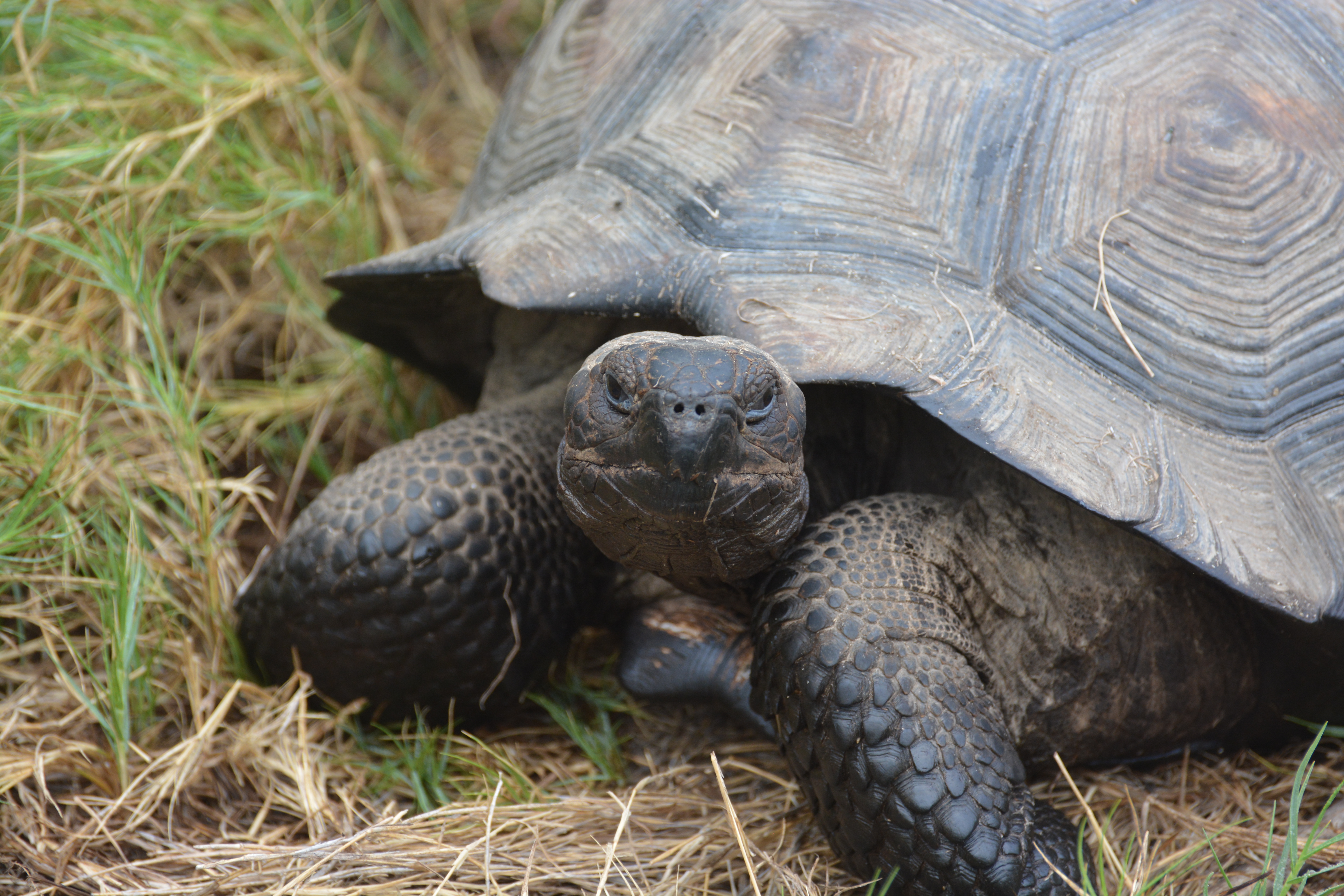
At Tagus Cove where there is the unusual phenomena of Darwin’s Lake, which is slightly higher than sea level but has no obvious source for its water that is more saline then the nearby sea. On the cliffs around Tagus Cove are a number of The Galápagos Islands’ most iconic birds, the Galápagos penguin and the flightless cormorant. The penguins are one of the smallest of all the world’s penguins and are the only penguin to venture north of the equator. The flightless cormorant have tiny wings that are next to useless, but the charm of the bird only becomes apparent when you see them in the water fishing for eels and small fish. Under water they are the most accomplished swimmer and seeing them poking around all the little caves for eels is an amazing sight. We saw them make a couple of kills, though it did take quite a while for the cormorant to swallow the eel. Other birds in the cliffs were blue-footed boobies, Nazca terns, noddy terns and pelicans. Again the waters were full of fish and marine turtles as well as the occasional fast penguin and playful sea lions.

Day four took us to Fernandina Island, the newest of all the Galápagos Islands and also the most pristine in that it has no known introduced species and also not human inhabitants. Fernandina Island was made famous in the recent BBC Blue Planet Series for the scene with the baby marine iguanas and the racer snakes. We had a wet landing onto the slippery volcanic rocks as the tide was out and we were met with a sea of iguanas. The weather was relatively cold and overcast so the iguanas were not very active and in the cracks of the lava we only saw one of the villains of the Blue Planet Series as snakes and other reptiles rely on the heat of the sun to regulate their body temperature and thus be active. Also on the shoreline were lots of sea lions complete with one or two week old pups and also one flightless cormorant nest with baby chick. There are only around 500 pairs of flightless cormorants in the world so it is a highly endangered species.
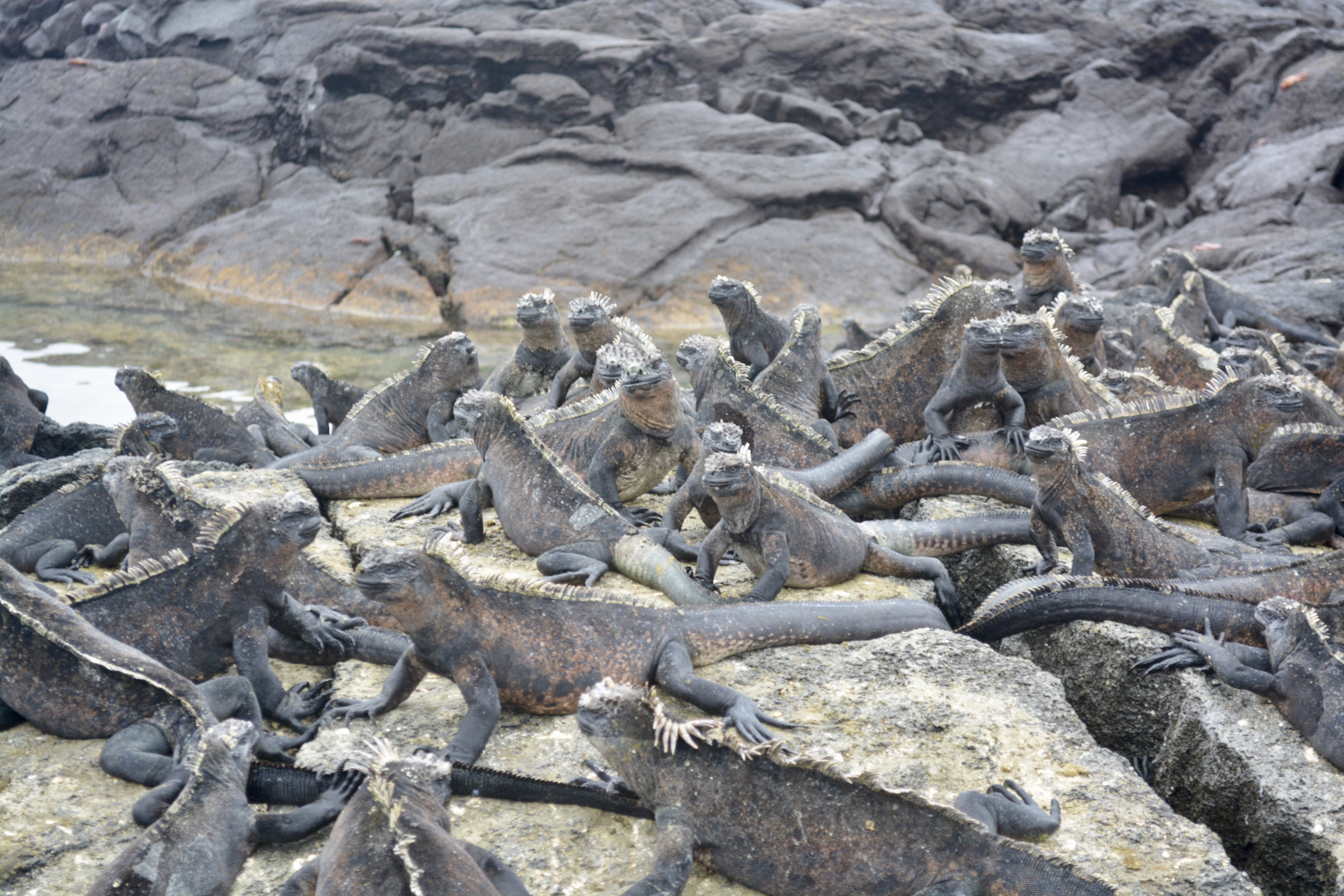
Our final activity took us back to Isabela Island and up to Punta Vicente Roca and our final snorkel and boat trip. Here the waters were even colder and also more churned up than our previous locations. Nevertheless the quantity of sea turtles was enormous, with groups of up to eight in a single sighting. The surrounding cliffs were full of blue-footed boobies, noddy birds, pelicans, Nazca boobies and also the occasional penguin.
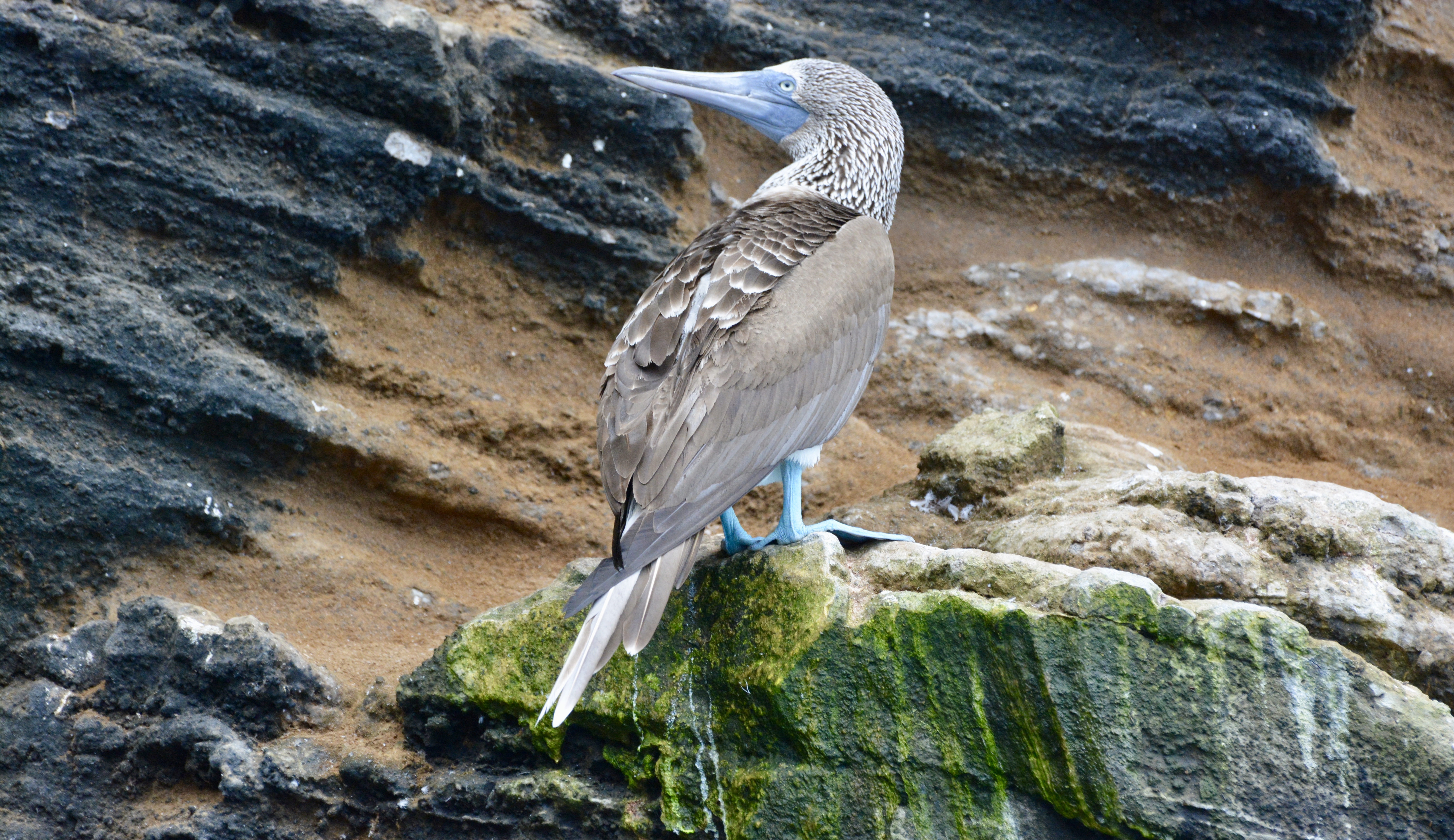
After our final activity we sailed North around the top of Isabela Island, crossing the equator twice before returning to Santa Cruz Island. It was on this leg of the trip that we saw our first whale, a sperm whale after much argument amongst the guides.
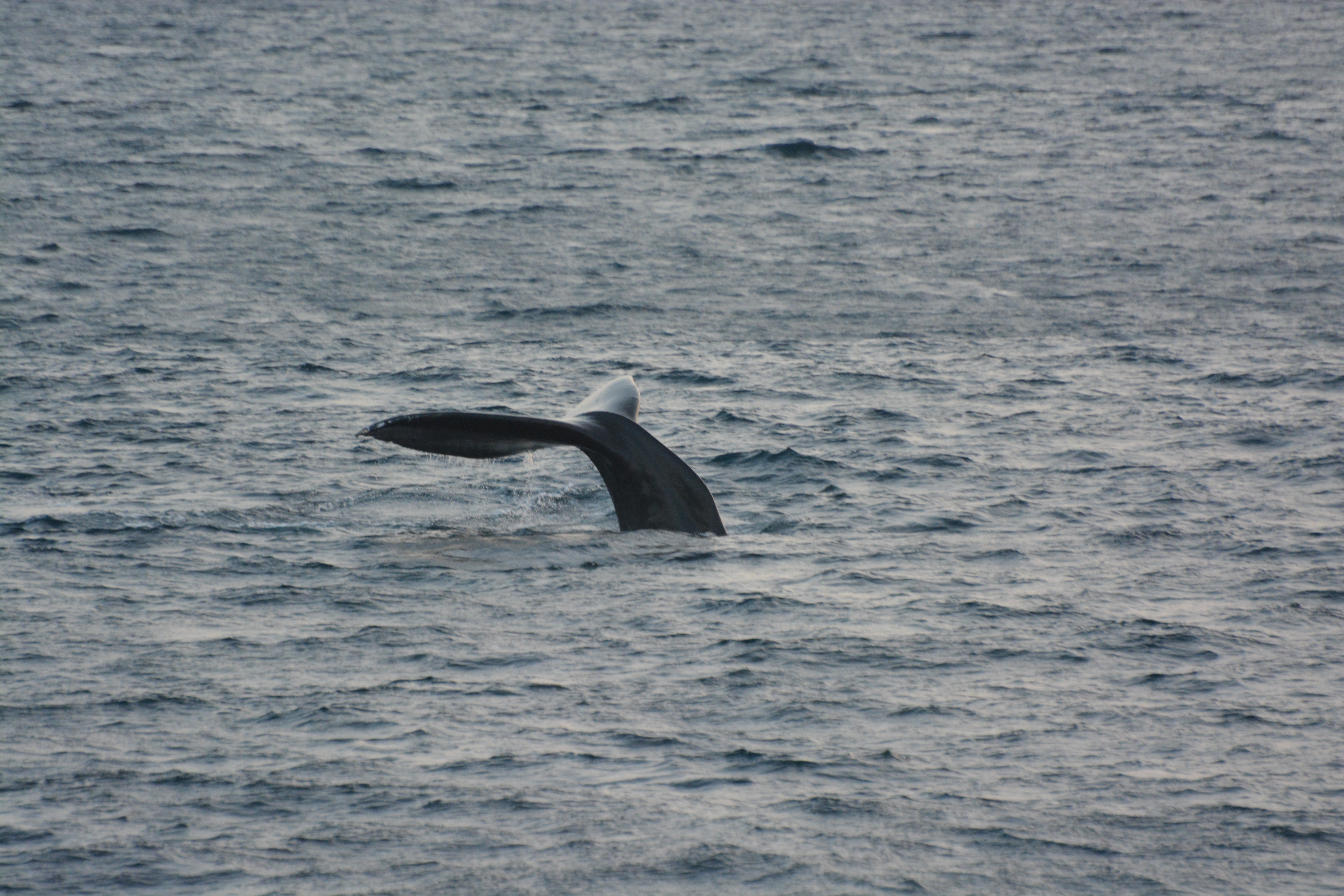
Overall taking a cruise is one of the best ways to see the Galápagos Islands and the ship was very comfortable with excellent crew. The guides were very knowledgeable and provided the right amount of detail and information for the passengers. However cruises do not come cheap and while everything is included in full board, the hire of snorkelling equipment and the tipping of both the crew and guides does make a further significant dent in your budget and with there being very few ATMs in the Galápagos Islands any visitor needs to come prepared with lots of cash.
Date: 09/08/2018 to 18/08/2018

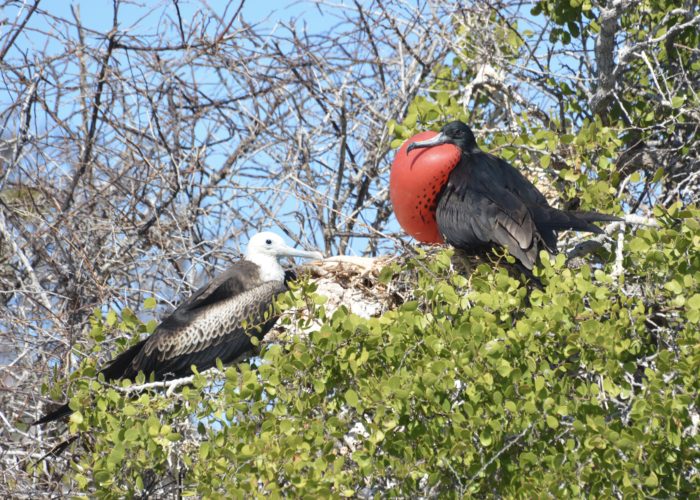
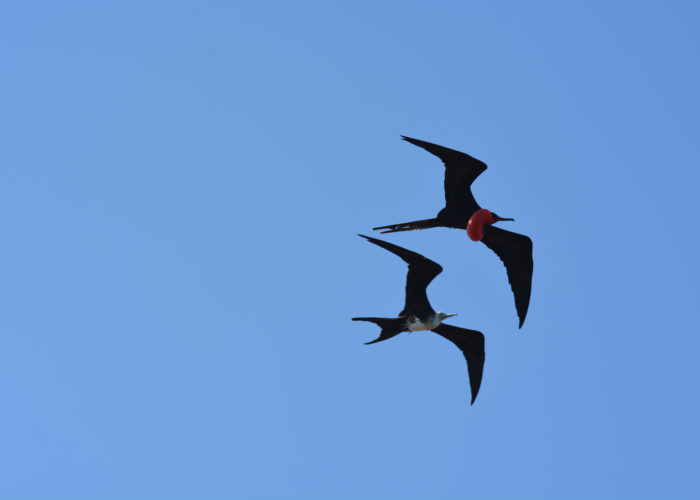
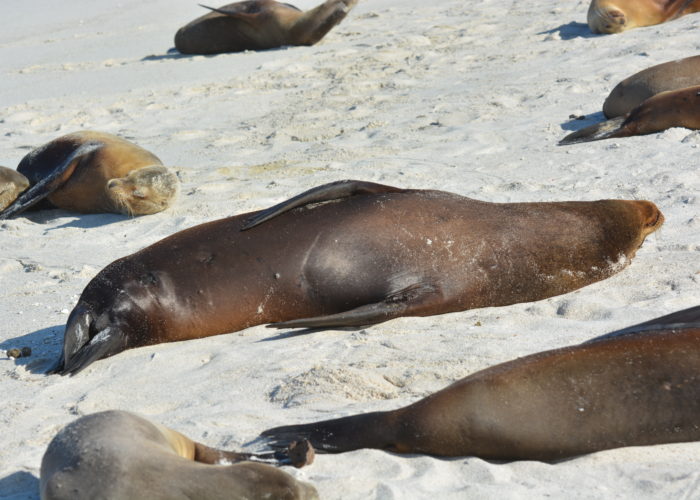
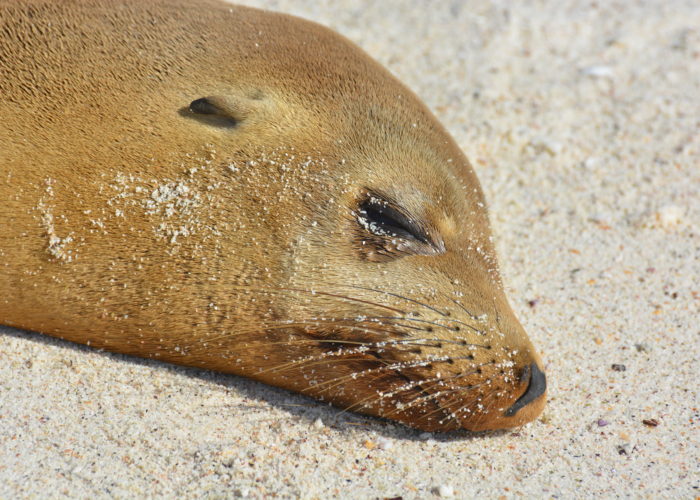
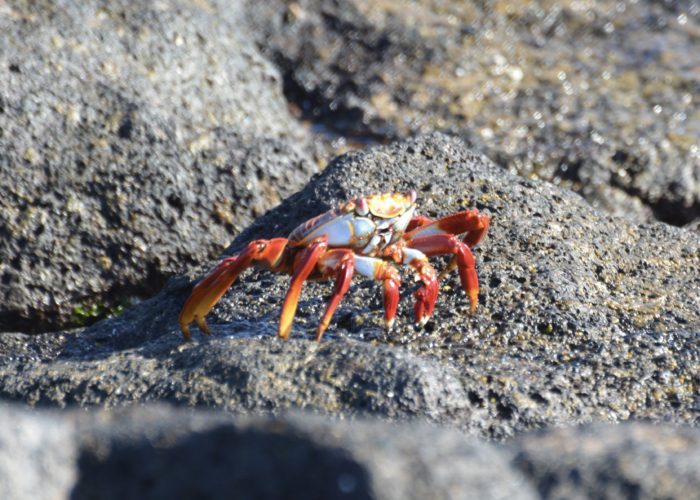
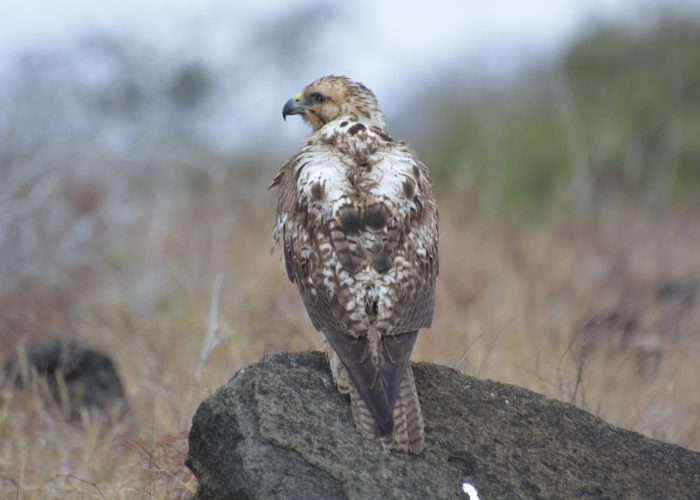
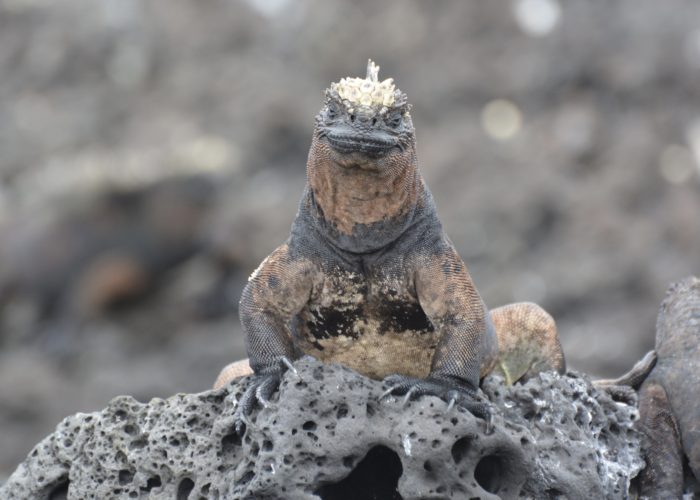
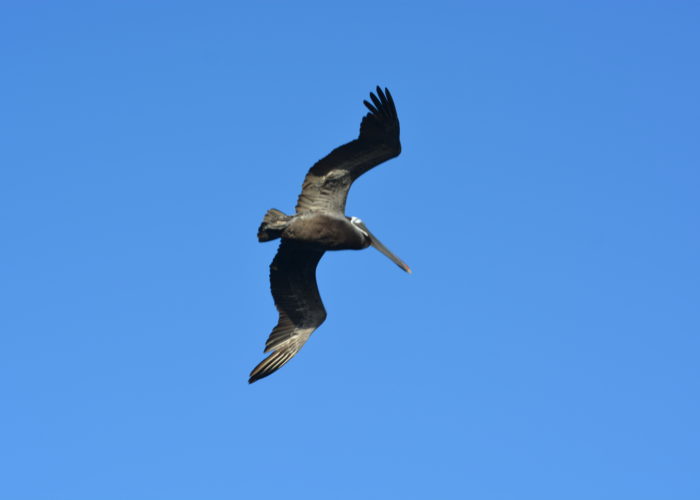
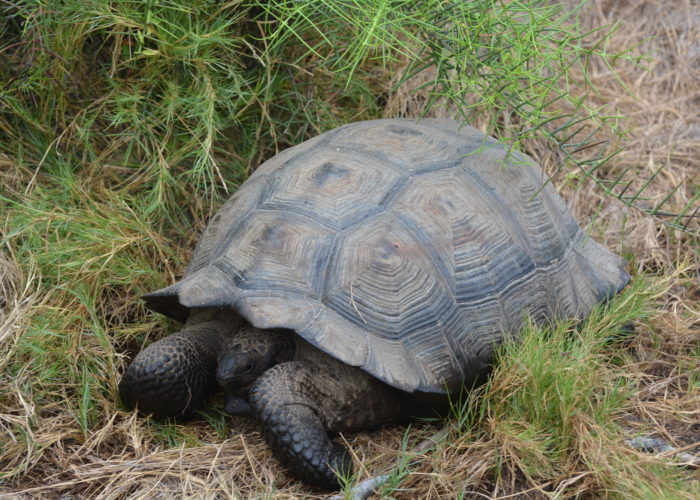

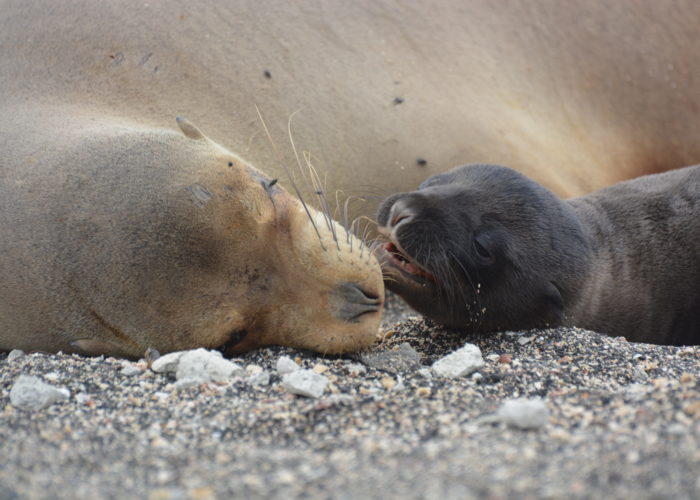
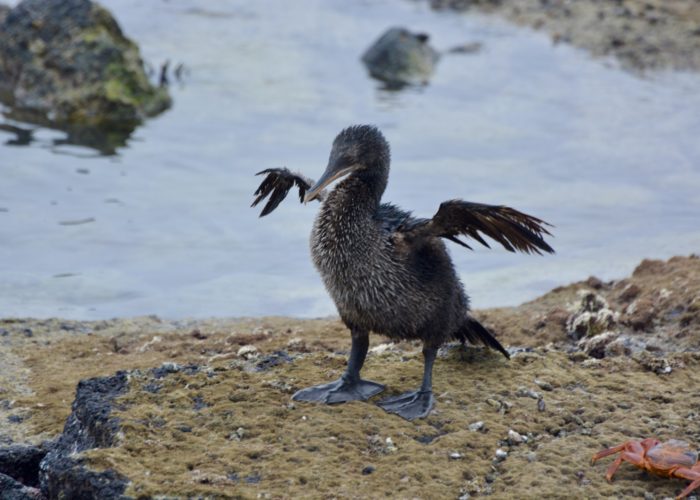
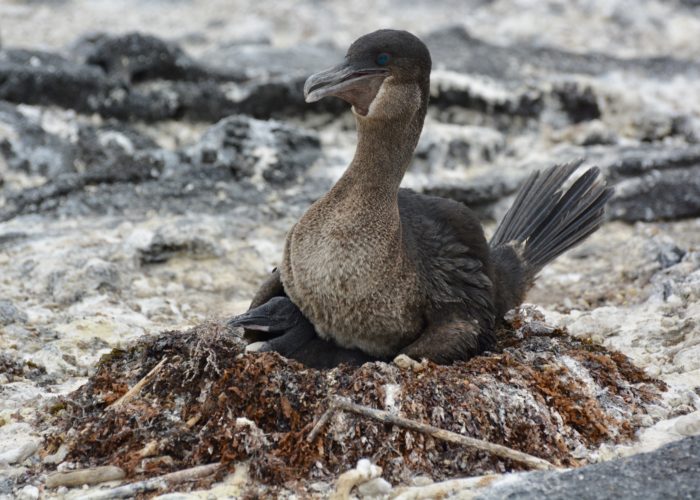
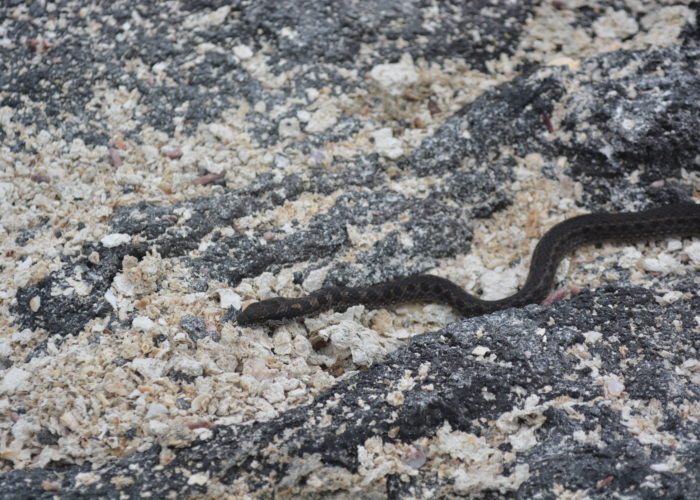
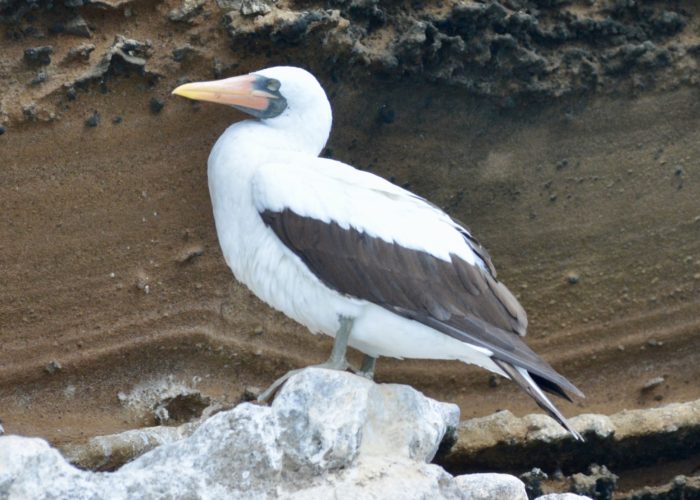
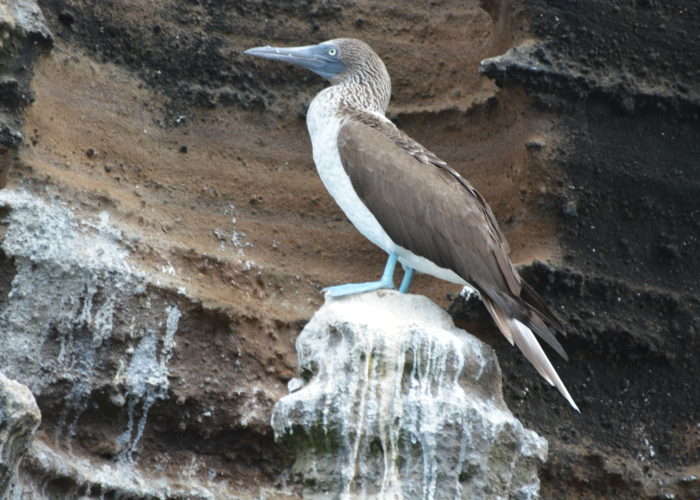
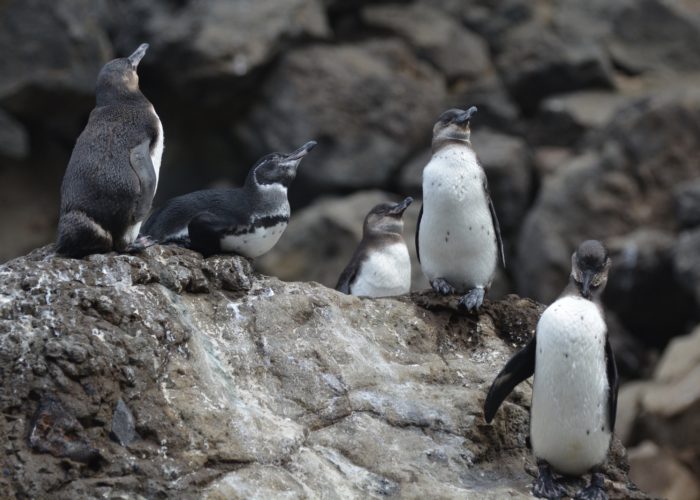


Lovely to see this and wishing you both well on your forward travels! Roger, Christine, Michael and Jade – fellow Legend passengers and snorkelers. The children have both gotten into Uni – Michael for Ecology at Nottingham and Jade for Art Foundation at Bournemouth. Enjoy the rest of your trip!
That’s fantastic news, wish them all the best in the next stage of their lives. The Galapagos were truly awesome and the week of land based stuff gave a different perspective. We are now in Southern Colombia at the San Agustin Archaeological Park. Colombia is very friendly and seems much richer than Peru and Ecuador. All the very best Simon & Alison
Hi I see you won the photo competition in the Sunday Times! Awesome.
Yes, I did! Amazed you saw that. The main prize for the year is a 2-week holiday to Colombia. I don’t hold out much hope for that, but you never know!
Hi Christine, you’ll like Colombia, its probably the friendliest country of all those that we have visited and that is some competition. Fingers crossed that you win that trip! Simon